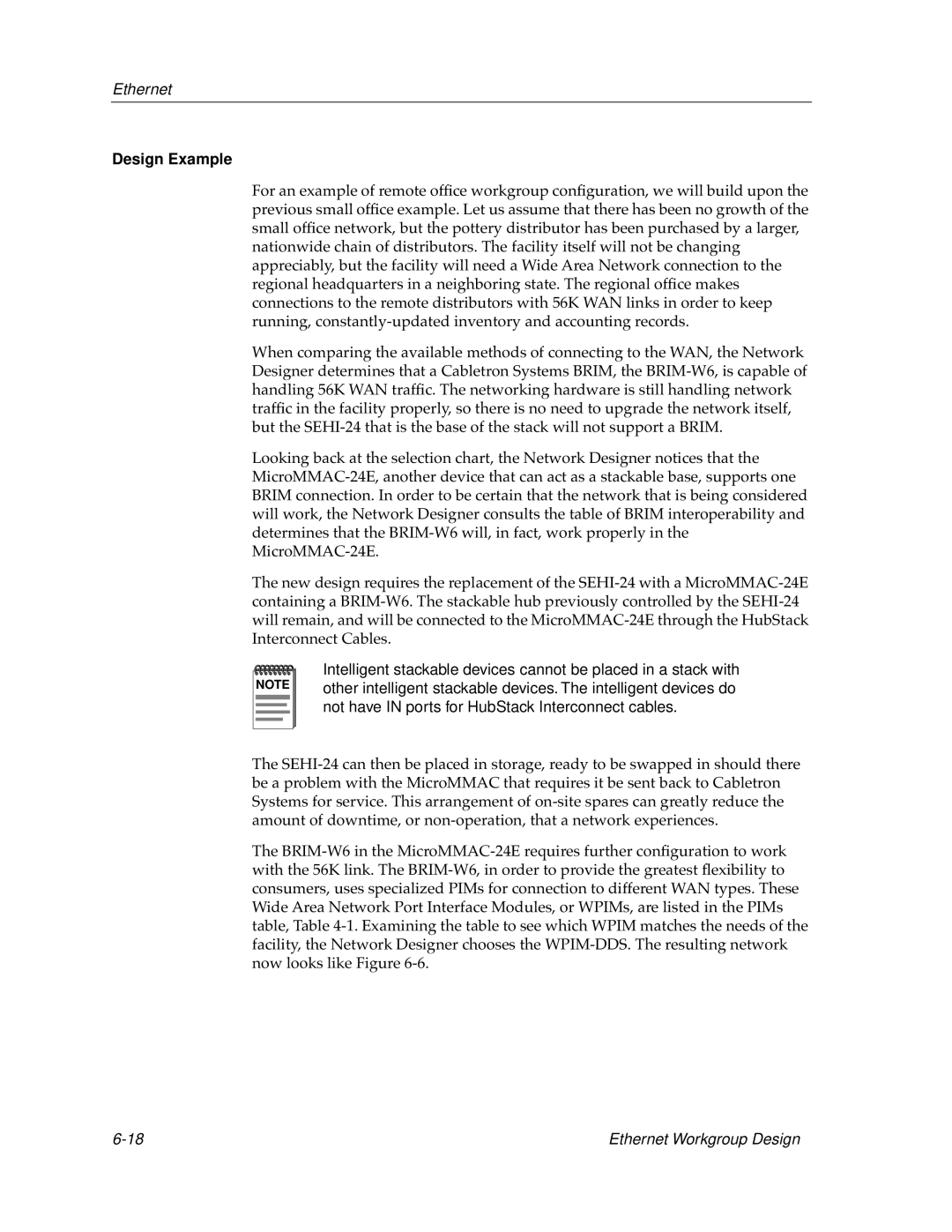
Design Example
For an example of remote office workgroup configuration, we will build upon the previous small office example. Let us assume that there has been no growth of the small office network, but the pottery distributor has been purchased by a larger, nationwide chain of distributors. The facility itself will not be changing appreciably, but the facility will need a Wide Area Network connection to the regional headquarters in a neighboring state. The regional office makes connections to the remote distributors with 56K WAN links in order to keep running, constantly-updated inventory and accounting records.
When comparing the available methods of connecting to the WAN, the Network Designer determines that a Cabletron Systems BRIM, the BRIM-W6, is capable of handling 56K WAN traffic. The networking hardware is still handling network traffic in the facility properly, so there is no need to upgrade the network itself, but the SEHI-24 that is the base of the stack will not support a BRIM.
Looking back at the selection chart, the Network Designer notices that the MicroMMAC-24E, another device that can act as a stackable base, supports one BRIM connection. In order to be certain that the network that is being considered will work, the Network Designer consults the table of BRIM interoperability and determines that the BRIM-W6 will, in fact, work properly in the MicroMMAC-24E.
The new design requires the replacement of the SEHI-24 with a MicroMMAC-24E containing a BRIM-W6. The stackable hub previously controlled by the SEHI-24 will remain, and will be connected to the MicroMMAC-24E through the HubStack Interconnect Cables.
Intelligent stackable devices cannot be placed in a stack with other intelligent stackable devices. The intelligent devices do not have IN ports for HubStack Interconnect cables.
The SEHI-24 can then be placed in storage, ready to be swapped in should there be a problem with the MicroMMAC that requires it be sent back to Cabletron Systems for service. This arrangement of on-site spares can greatly reduce the amount of downtime, or non-operation, that a network experiences.
The BRIM-W6 in the MicroMMAC-24E requires further configuration to work with the 56K link. The BRIM-W6, in order to provide the greatest flexibility to consumers, uses specialized PIMs for connection to different WAN types. These Wide Area Network Port Interface Modules, or WPIMs, are listed in the PIMs table, Table 4-1.Examining the table to see which WPIM matches the needs of the facility, the Network Designer chooses the WPIM-DDS. The resulting network now looks like Figure 6-6.
6-18 | Ethernet Workgroup Design |

